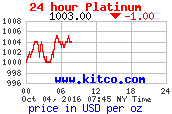The Diamond “4 Cs”
Carat – Color – Clarity – Cut
Refraction: Diamond’s Beauty Source
The beauty of diamonds lies in the beauty of their refraction. The more refraction, the more shine and sparkle. The more shine and sparkle, the more beautiful a diamond is. The more beautiful a diamond is, the more people are willing to pay for it. Thus, in the world of jewelry, the better the refraction, the higher the price.
Diamond refraction depends on four components. These are called the “4 C” and they are.
- Carat
- Cut
- Clarity
- Color
The Four Diamond “Cs”
Carat refers to the diamond size in terms of mass as measure in the carat unit of weights. The bigger the diamond, the more light it is going to catch. The more light the diamond catches, the more it refracts. Thus, the bigger the diamond, the higher the price.
Cut refers to the quality and precision with which the diamond cutter has sculpted the stone. Cutting diamonds is a very precise craft. The better job the diamond cutter has done in cutting (sculpting) the stone, the better the refraction. Thus, the better the cut, the higher the diamond price.
Clarity refers to how clean a stone is of imperfection. Imperfection are flaws in the diamond that affect the refraction of light. The main and most common imperfection in diamonds is carbon deposits, which are dark spots, but there are others. The fewer the imperfections, the better the clarity. The better the clarity the higher the refraction. The higher the refraction, the higher the diamond price.
Color refers to the diamond’s material hue. The ideal hue for a diamond is colorless. The closer a diamond is to colorless, the higher the refraction. The higher the refraction, the higher the price.
The main driver of a diamond’s price is how beautifully the diamond refracts light. The better the refraction, the higher the price. Since diamond are a natural product, all are different. It is the job of the diamond cutter to select diamonds, grade them and cut them in the best way for maximum refraction. This is when “the four Cs” come into play.


![[Most Recent Quotes from www.kitco.com]](http://www.kitconet.com/charts/metals/gold/t24_au_en_usoz_2.gif)
![[Most Recent Quotes from www.kitco.com]](http://www.kitconet.com/charts/metals/silver/t24_ag_en_usoz_2.gif)
![[Most Recent Quotes from www.kitco.com]](http://www.kitconet.com/charts/metals/platinum/t24_pt_en_usoz_2.gif)










